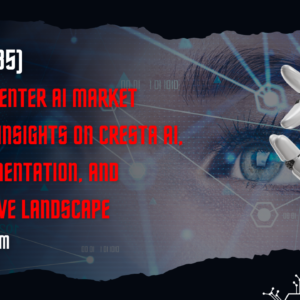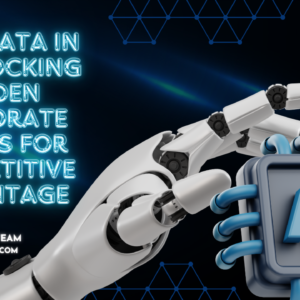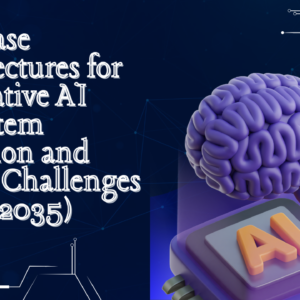1. Executive Summary
- Key findings on the growth of AI infrastructure versus AI software in cloud service providers.
- Overview of AI compute demand in major providers (Microsoft, Amazon, Google).
- Top applications, use cases, and the entities paying for AI-driven solutions.
2. Introduction to AI Infrastructure in Cloud Service Providers
- Definition and importance of AI infrastructure.
- Overview of the leading cloud service providers (Microsoft Azure, Amazon Web Services, Google Cloud) and their AI capabilities.
- Differences between AI infrastructure (hardware, compute) and AI software (tools, services).
3. Growth in AI Infrastructure vs. AI Software
- Comparative growth rates: AI infrastructure (e.g., GPUs, TPUs) vs. AI software solutions (e.g., machine learning platforms, analytics tools).
- Analysis of capital expenditure trends among cloud providers for AI infrastructure investment.
- Key factors driving infrastructure growth: AI/ML model complexity, big data processing needs, enterprise demand for AI integration.
4. Who is Driving Demand for AI Compute?
- Enterprise Demand: Large corporations across finance, healthcare, manufacturing, and automotive sectors investing in AI compute for innovation.
- Research and Academia: Universities and research labs using AI compute for scientific discovery and experimentation.
- Startups and Tech Innovators: Emerging companies leveraging cloud AI compute to build AI-driven products and services.
- Public Sector: Governments and defense sectors adopting AI compute for security, defense, and citizen services.
5. Use Cases and Applications for AI Compute
- Natural Language Processing (NLP): AI compute usage in chatbots, virtual assistants, sentiment analysis, and content moderation.
- Computer Vision: AI infrastructure powering image and video recognition applications, facial recognition, autonomous vehicles, etc.
- Machine Learning (ML) and Deep Learning (DL): AI compute driving predictive analytics, recommendation systems, and fraud detection models.
- Big Data Analytics: AI compute facilitating large-scale data processing and real-time analytics for industries like finance and retail.
- Robotics and Automation: AI compute used in robotics for manufacturing, logistics, and healthcare applications.
6. Who Pays for AI Compute Solutions?
- Enterprises: Corporations paying for AI compute in cloud environments to drive business transformation and automation.
- Developers and Startups: Small businesses and individual developers leveraging AI infrastructure to build new applications, with cloud-based pricing models.
- End Consumers (Indirectly): Through AI-enhanced products and services, such as recommendation engines, virtual assistants, and enhanced customer service tools.
- Government and Public Institutions: Public funding for AI compute infrastructure supporting research and national AI initiatives.
7. Monetization Strategies for AI Infrastructure
- Pay-as-you-go Models: Flexible pricing based on compute usage, benefiting startups and enterprises needing scalable solutions.
- Subscription-based Pricing: Monthly or yearly subscription fees for sustained access to AI infrastructure, benefiting larger enterprises.
- Tiered Pricing: Higher pricing for specialized AI compute (e.g., TPUs, high-end GPUs) for advanced applications.
- Bundling AI Tools and Infrastructure: Combining AI software tools and compute infrastructure into packages for end-to-end AI development.
8. Competitive Positioning of Microsoft, Amazon, and Google in AI Compute
- Microsoft Azure: Strengths in enterprise adoption, AI research partnerships, and vertical-specific AI offerings.
- Amazon Web Services (AWS): Dominance in flexible AI compute services (e.g., EC2 P4d instances), integration with AWS machine learning tools.
- Google Cloud: Strengths in AI-driven infrastructure (e.g., TPUs), specialized machine learning services, and Google AI’s innovation leadership.
9. Industry Trends Shaping AI Infrastructure Growth
- Rising Demand for AI-Powered Cloud Services: Enterprises moving workloads to cloud for better scalability and flexibility.
- Emergence of AI-First Strategies: AI becoming integral to enterprise digital transformation efforts, driving demand for scalable AI compute.
- AI Chips and Accelerators: Growing importance of specialized AI hardware (GPUs, TPUs) in accelerating model training and inference.
- Shift to Edge AI: Cloud providers exploring hybrid models with AI compute both in the cloud and at the edge for real-time processing.
10. Future Outlook for AI Infrastructure in Cloud Providers
- Projected growth in AI compute demand over the next decade.
- Impact of evolving AI technologies on infrastructure requirements (e.g., quantum computing, neuromorphic chips).
- Anticipated shifts in cloud provider strategies to differentiate AI compute services.
11. Conclusion and Recommendations
- Key takeaways for investors and stakeholders.
- Strategic recommendations for cloud providers on optimizing AI infrastructure offerings.
- Emerging opportunities for businesses leveraging AI compute for innovation.
12. Appendices
- Glossary of technical terms.
- Industry benchmarks and market data.
- Survey methodology and respondent demographics.
#AIInfrastructure #CloudAI #AICompute #MachineLearning #DeepLearning #AIInCloud #GPUs #TPUs #AzureAI #AWSAI #GoogleCloudAI #AIChips #BigDataAnalytics #NaturalLanguageProcessing #EdgeAI #AIAccelerators #AIIndustryTrends #AITransformation #EnterpriseAI #AIInnovation





